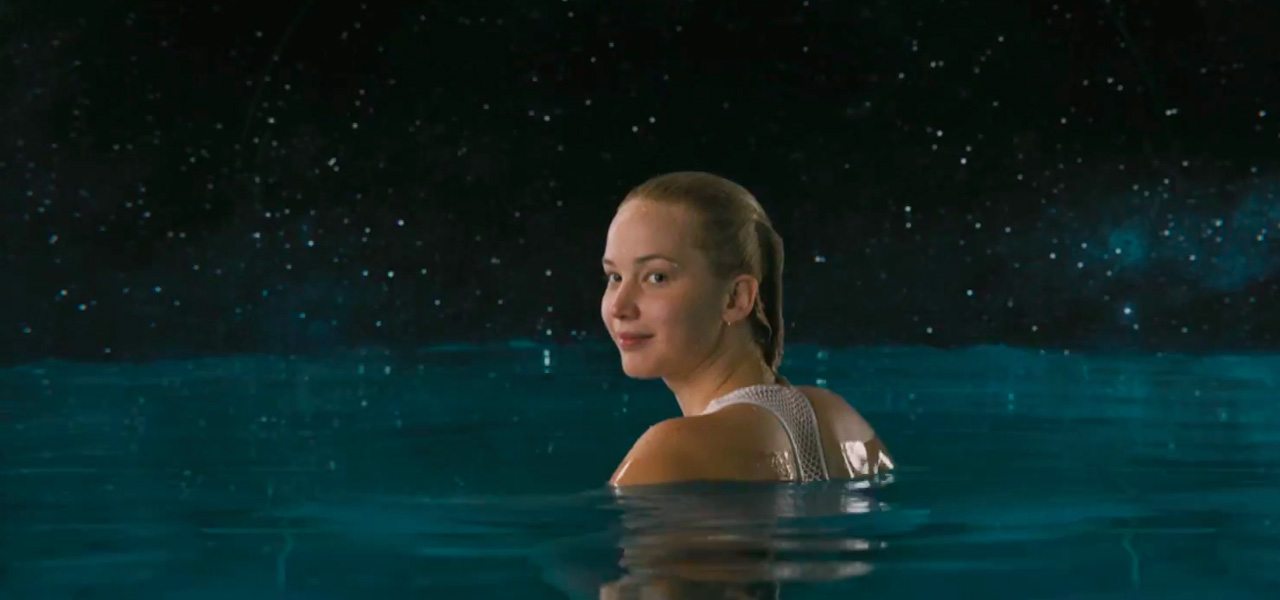
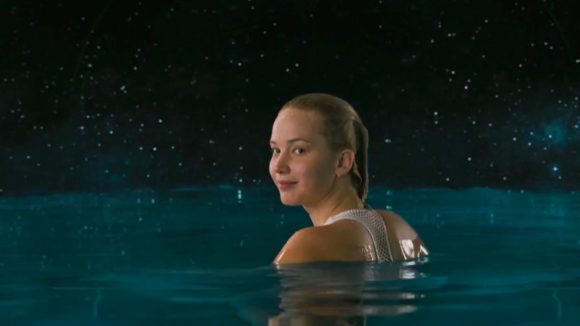
How They Pulled Off That Insane Swimming Pool Scene in ‘Passengers’
One of the landmark scenes in Morten Tyldum’s outer space thriller Passengers features starship passenger Aurora Jane (Jennifer Lawrence) taking a dip in the ship’s swimming pool. When the anti-gravity fails, Aurora is pulled into a large droplet of water hovering in the air.
Making the scene possible would require a combination of a real pool set built in Atlanta, shots of Lawrence filmed underwater, and extensive digital fluid simulations. These elements were brought together by visual effects studio MPC.
Cartoon Brew spoke to overall visual effects supervisor Erik Nordby about how the sequence was made, including the surprising findings behind researching zero gravity water and having to hold back on animating the water into too much of a creature.
Researching zero gravity water
One of the first things tackled by Nordby and MPC was how to simulate the water as it rose from the pool. Although still an incredibly difficult element to simulate, water in the form of waves or oceans has been done quite effectively in several recent films. But water from a swimming pool in zero gravity – that was a different story.
MPC therefore went through a round of R&D for how the water floating out of the pool would look. This began by simply moving sliders in the simulation software that dealt with gravity. “That applied a very maths-correct look to it,” said Nordby. “I guess it just meant that the people are doing the jobs that they’re supposed to be doing when they’re designing these sims!”
However, as tests continued the look had moved into what Nordby described as a “massive gelatinous bubble,” which didn’t initially feel as convincing as it could be. That’s when the R&D turned to what had actually been done for real with water in space, specifically on the International Space Station. And, it transpired, zero gravity water does look like gelatinous balls of water.
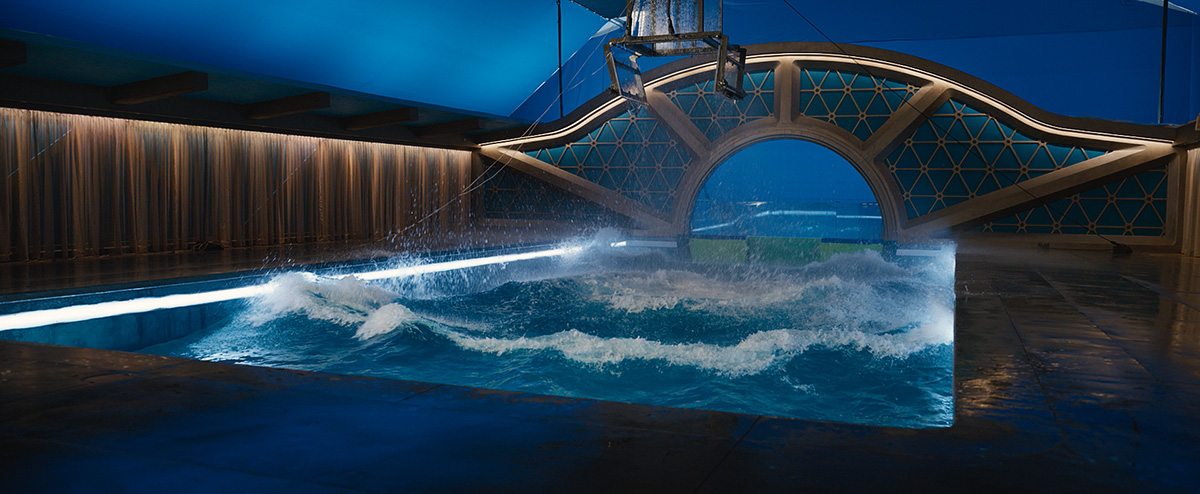
That look was then combined with a very specific direction from Tyldum, who wanted these bubbles to be something very terrifying but also very beautiful. MPC soon realized that what might work in this way was slow motion water. “Audiences are very sophisticated when it comes to intense slow motion, which is all over the internet – all that 10,000 frames per second stuff,” said Nordby.
“As soon as we didn’t just have the water floating, but rather we interrupted it in an extraordinarily slow way, then it still felt in zero gravity, but also fell into a world that made sense. It felt like something an audience had seen before and therefore felt real.”
MPC then built up caches and caches of the ultra-slow motion water in their software which then interacted with larger volumes of water, too. In total it involved simulating 180,000 gallons of water, along with secondary slow-motion splash elements, plus aerated bubbles, and other atmospheric elements.
Shooting Jennifer Lawrence in zero-g
As the water begins to lift into the air, so too does Aurora. The approach to filming Jennifer Lawrence took several turns. The filmmakers considered shooting the actress ‘dry for wet,’ meaning not immersing her in water at all. But since testing could not take place until the pool itself had been built (in the parking lot outside of the film stages in Atlanta), the ultimate method of shooting became ‘wet for wet,’ i.e., filming in the actual filled-up pool.
“I spoke to Jen about what that would mean and, with the stunt co-ordinator and special effects, we ran her through what we would need Jen to do,” said Nordby. “She was completely game. She’s very self-deprecating so her comeback was, she’ll try it but she might suck. But she didn’t suck; she was great.”
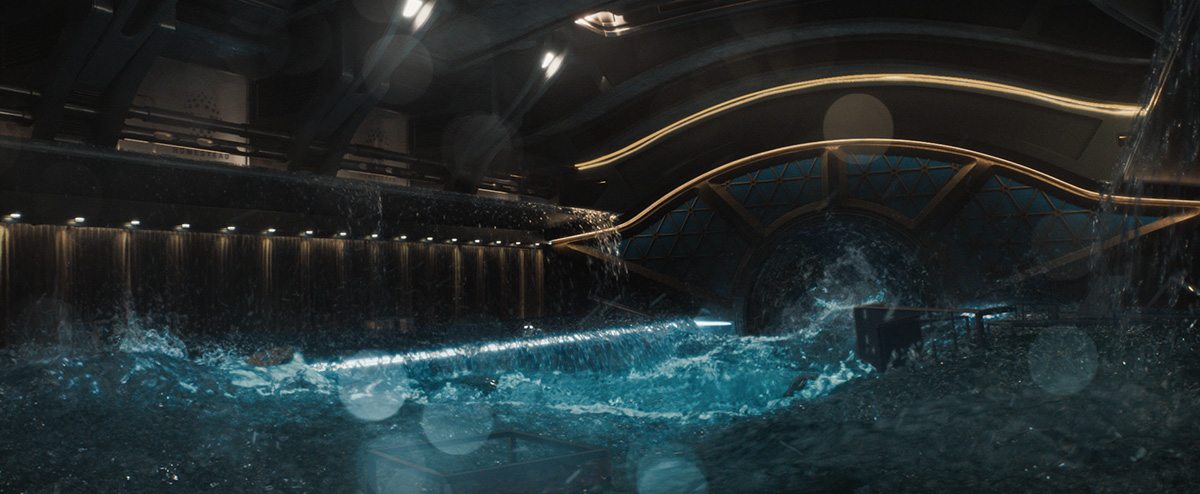
The ‘wet for wet’ shooting effectively involved shooting with an underwater camera system against an underwater greenscreen. Lawrence or her stunt double performed scenes while safety divers stood by. This included shots where the character would still be affected by zero-g, to a point. “At the end of the day it was getting her in a place where the buoyancy of the human body didn’t work against us,” noted Nordby.
A large amount of ‘techvis’ had also been carried out earlier to work out which body and camera positions adequately showed the effects of zero gravity. That governed how the scenes were shot, and a subsequent shoot after principal photography in another tank to acquire several close-up shots of Lawrence provided additional material. Since this was later in the schedule, it also meant MPC had had some time to work out how much of the initial ‘wet for wet’ photography could be used – one lesson learnt was to film the new shots in super-clear water which helped with compositing.
Finalizing the scene
The final shots were then a combination of all these things – the practical pool set, digital water, and elements of Lawrence – and occasionally a digital double of the actress. What made the scene that much more dramatic was a push from the director to not necessarily give the water any extra character.
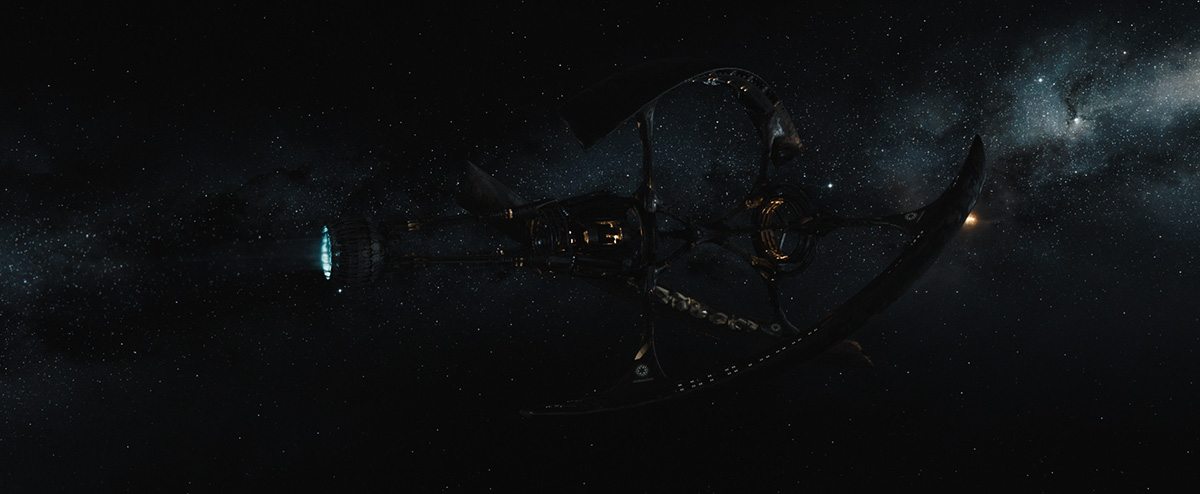
“It kind of snuck up on us,” admitted Nordby, “where, as we pushed this water around, it started to feel like a water monster that was out to get Jennifer. But that’s not what Morten wanted. He wanted it to feel like it was just doing what it would do regardless of anyone else in the room, and that Aurora just happens to be caught in it. Essentially it’s a microcosm of the larger storyline which is that they’re trapped on this luxurious ship but it’s also their prison.”
